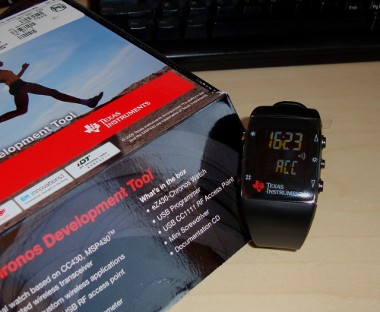How the TI ez430 Chronos watch could be better (Updated)
08 Feb 2010Without a doubt TI have produced a cult product in the chronos watch and it seems to be marketed to both get people using their msp430 chips and on a smaller scale produce cool projects with the watch. They have done well in providing the code for the watch and the the included hardware works well (albeit lacking much Linux compatibility). However I feel they’ve been slightly too clever in the hardware design and thus prevented some cool uses of the product. This post comes in response to some views recently posted on hackaday.
A recent hackaday post suggested using the supplied receiver could be modified to be used with an MCU, however this is unlikely unless the MCU acts as a USB host for a CDC device. Also the currently available watches use 868MHz which is a band in which cheap transceivers are not available (or at least that I can find), when the 433Mhz version is released in march interfacing the watch with an MCU may become a trivial task with cheap hardware. The supplied RF transceiver is based on a TI C1111F32RSP chip which sadly goes directly from RF > USB which makes it difficult to repurpose, if they had used an RF > serial things would have been a lot nicer for hardware hackers. This problem will of course not apply with the 433MHz version.
So that’s it, for me I see no further path with directly hacking communication with the watch from an MCU for the 868MHz version…I’ll await the much more hackable 433MHz version in march and in the meantime work on other things….
Update: After some research on the comms used by the watch and receiver it looks like it might be very non trivial to get working with a generic RF transceiver as the data seems to be modulated in a nasty way which I’m not fully clear about, it seems that it might only work with TI devices, which if true is sad but only time will tell. My overly complicated system has the advantage that it can be integrated into my existing automation systems more simply than a dedicated MCU solution. Details of the encoding can be found here.
